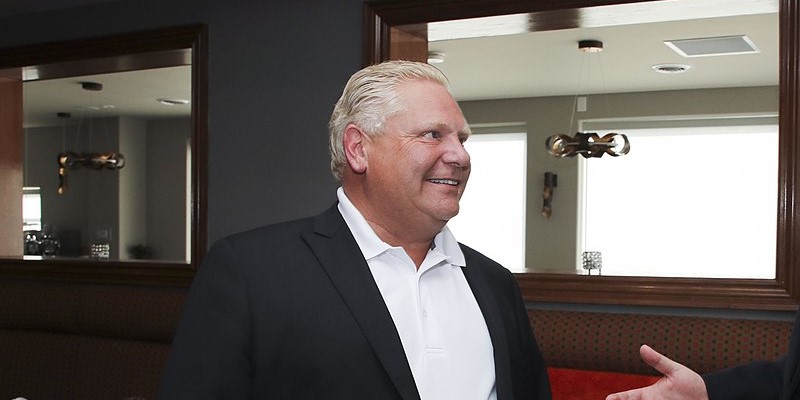Ontario government can balance books with moderate spending restraint

The Ford government will likely table its budget next month. According to projections, Premier Ford’s government is on track for a $5.6 billion deficit this year, almost identical to last year’s deficit of $5.9 billion, a substantial deficit next year, and a return to budget balance in 2025/26. But that forecast has significant risks, relying on revenue growth and no further increases in spending.
The Ford government’s plan, which calls for almost no deficit reduction next year followed by a reduction of more than $5 billion the following year, invites a simple question. Why wait?
Premier Ford and various members of his cabinet have spoken many times about the dangers of extended periods of deficit-spending and debt accumulation. And yet, in contrast to those public statements, the Ford government is taking a slow and uncertain path back to balance.
The Ford government, however, has another option aside from kicking the can of deficit elimination down the road and hoping there are no surprises between now and 2026. This option is to table a balanced budget next month, which, according to current revenue forecasts, it can do without meaningful spending reductions.
Let’s look at the numbers. In 2024/25, the Ford government forecasts it will collect $206.7 billion in revenues. This isn’t enough to cover the government’s $210.5 billion in planned spending. As a result, if we exclude reserve funds and contingencies from the fiscal plan, the Ford government foresees a $3.8 billion shortfall.
So how much spending would the government need to cut to keep its operating budget living within the means of the $206.7 billion in revenue it expects to collect next year? The answer is almost none.
In the 2023/24 fiscal year the government plans to spend $206.4 billion—which is slightly less than the $206.7 billion it expects to collect next year. Meanwhile, debt interest costs, which are outside the government’s immediate control, will increase by a projected $851 million next year.
This means that to achieve budget balance given current revenue forecasts, the Ford government must reduce program spending (all spending aside from debt interest) from 2023/24 levels by approximately $565 million. This is a rounding error in the context of Ontario’s budget—a reduction of far less than one per cent. It’s fair to say that a one-year spending freeze would be enough to essentially balance the budget.
Holding nominal spending flat for one year does present public management challenges. Ontario’s population is growing and inflation, though it has slowed considerably, does put upward pressure on spending. However, in the context of current spending levels and the Ford government’s longstanding claims of fiscal prudence, these challenges should be manageable. After all, inflation-adjusted per-person program spending is higher now than it was at any point during the tenure of Kathleen Wynne, who Premier Ford has frequently cast as profligate in the past.
Ontario’s economy is expanding (albeit not quickly) and the Ford government is not facing any extraordinary circumstances that demand continued deficits. The annual shortfalls are a policy choice that suggests the Ford government still does not plan to prioritize addressing the province’s debt problems.
Returning to a balanced operating budget wouldn’t mean the end of Ontario’s fiscal challenges. For starters, there’s the matter of addressing the massive debt accumulation of the past 15 years and finally starting to meaningfully shrink that burden relative to the size of the economy. However, balancing the operating budget a year ahead of schedule by putting the brakes on nominal spending growth would be a welcome first step and a sign that perhaps the Ford government is finally ready to get serious about the fiscal challenges facing Ontario.
Author:
Subscribe to the Fraser Institute
Get the latest news from the Fraser Institute on the latest research studies, news and events.

